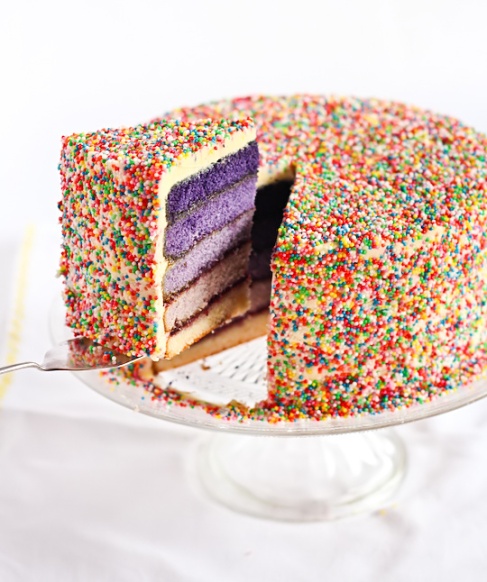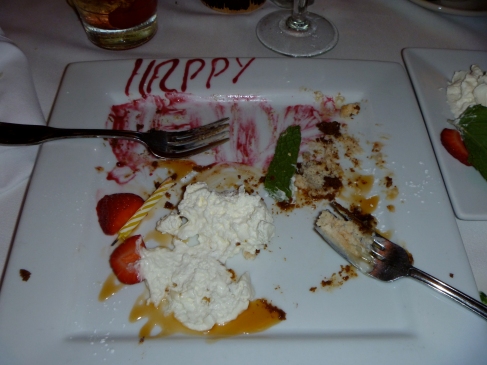I hope you all have been good little boys and girls and grown man/woman-children, because as promised I am going to explain blood glucose regulation. Bad children are temporarily banned from learning. Don’t even try to keep reading. You don’t want to know the punishment.
Anyway, first of all, take a look at this cake:
We shall be considering this masterpiece of sweet, sweet heaven (courtesy of Stephanie Michaelis at Raspberri Cupcakes) for the rest of my post. Additionally, we have two scenarios: eat the cake and gaze longingly at photos of/not eating the cake.
Now, let’s imagine we get to eat some of this colorful, culinary delight. After some digestion, the pancreas recognizes the resulting increase in blood glucose. The pancreas has exocrine (secretes chemicals such as alkaline solution and digestive enzymes via ducts) and endocrine (secretes hormones directly into the bloodstream) tissues. Within the endocrine tissues are beta cells, the most abundant endocrine cell in the mammalian pancreas. Beta cells synthesize and secrete insulin in response to increased blood glucose. Insulin then travels to the liver and signals glycogenesis; the production of glycogen in skeletal muscle as well as the liver. Insulin will also inhibit gluconeogenesis (the production of glucose from molecules such as pyruvate or lactate) and facilitate glucose transport to cells. As a result, blood glucose will decrease to normal levels.
OK, back to reality. We do not get to eat the cake. We get to salivate with intense longing at the computer screen. We lose track of time. We forget to make a sandwich for lunch. Blood glucose drops. The pancreas detects this drop and other cells in its endocrine tissue, the alpha cells, produce and secrete glucagon into the bloodstream. Because the glucose…is GONE. Get it? Get it? Anyway, the liver receives this signal, glycogen production then decreases while glycogenolysis (glycogen break-down) increases along with gluconeogenesis. Blood glucose then increase to a more normal level.
Insulin and glucagon do not act exclusively of one another, with every spike and drop in blood glucose they work together to bring things back to normal. Of course, they can’t act instantly and can only go so far. For instance, Insulin would struggle if you inhaled an ENTIRE cake, while I can personally advise against long fasts if you want to do anything requiring focus like say…navigating Chicago by yourself on your first visit without passing out on the sidewalk on the way to the taxi. Those are bad life choices; spiking your blood glucose too high too often has long-term consequences and passing out on the sidewalk in a strange city has ALL the consequences.
So be street smart, carry snacks.
Source
Sherwood, Lauralee, Hillar Klandorf and Paul Yancey. 2005. Animal Physiology: From Genes to Organisms. Thomson Brookes/Cole, Belmont, CA.
Photo credit:
Michaelis, Stephanie. 2011. “Purple Ombre Sprinkles Cake.” Raspberri Cupcakes. 19 November, 2013 <http://www.raspberricupcakes.com/2011/11/purple-ombre-sprinkle-cake.html>



